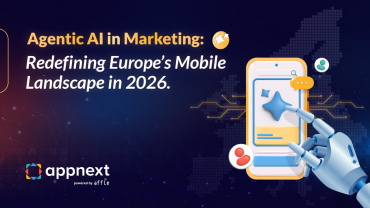The world of mobile apps has seen exponential growth and change since the inception of the App Store in 2008. After the store’s launch, there were 552 apps, and the majority of them were paid. Fast forward to 2016, there are 4.4 million apps in both app stores. The vast majority of these apps are free — as users demand it that way. According to Mobile Gaming Insights Report by Soomla, only 3-5% of game users will convert to being paid users, and only 2% of the gamers still continue to use the game on the 30th day.
These are tough statistics, so the app industry had to adjust to meet consumer demands. Furthermore, app monetization may be tricky, and requires solid knowledge, and strategy. The questions always arises — should I place ads or not? How do I approach in-app purchases? Should I offer a premium paid package? Developers want the best user experience, but they have to turn a profit. We will discuss all types of app monetization strategies, both ad-based and not; as well as important metrics and tools to monetize in the most efficient way possible.
Non-Ad Monetization
Paid apps
Classic economic theory tells us that when a consumer wants something, he or she will pay for it. Some developers opt into the classic model of paid apps, which, as discussed was far more popular in the early days of the App Store. With that being said, paid apps have declined in popularity amongst developers but are still on the market, for good reasons.
Because there are significantly less paid apps than free in the stores, there is less competition amongst paid apps, which many developers like. Let’s face it, the stores are saturated with free apps, so having less competition can be a plus. Paying users are also known for being more active and engaged with the app which can be a positive for your reviews, ratings and overall reputation. Furthermore, having a paid app gives users a feeling that your app is legitimate and well-made — so make sure it is! Another big advantage of having a paid app is the clean user-experience because there are typically no ads.
Keeping all of this in mind, there are challenges of having a paid app. One of the biggest challenges for paid apps is marketing, as most ad networks/platforms work only with free apps. (Guide to marketing paid apps). Another challenge is user expectations. Users who will pay for your apps will have higher expectations than those who download for free. They assume that if they are actually paying for it, the app must have high-value features and content. Thus, if you decide to make your app paid, make sure it’s of the highest quality, to ensure good ratings and reviews.

Moji Maker, by AppMoji, currently one of the top paid apps in the App Store
Freemium
In 2013, this model was the number one pricing strategy in the App Store (see table below), and still is to this day. This model allows users to access the app for free, yet certain features are gated, so the user must pay for them to be unlocked. This model has become very popular these days since the majority of users demand free apps; the users who want more features or a higher quality of the app can purchase them with the freemium model.

The two most common types of freemium models are the classic approach and in-app purchases (also known as paidmium). The classic model has a free-forever version that has limited features and a premium version for purchase.
In-app purchasing/Paidmium model
The more popular model as of late is “paidmium,” through in-app purchases, such as lives, special powers, new levels, physical and virtual items. These days, developers are creating special packages for in-app purchases, such as 2 lives for $4 dollars, 5 lives for $5 dollars, and so on.
Cookie Jam by SGM, currently on the list of top grossing iOS apps, is a freemium game that uses in-app purchasing for monetization. The developers strongly believe in providing quality free games while allowing users who want more features to purchase something of real value.
Just a few weeks ago, Pokemon GO was all the rage, earning an estimated $1.6 million revenue per day from in-app purchases. Pokemon GO’s success highlights the vast earning potential of in-app purchasing today.
Angry Birds 2 by Rovio is also another paidmium model that uses in-app purchasing whereby users can purchase power-ups, life refills and in-game currencies. The original Angry Birds game was a classic freemium model, whereby certain features (such as higher levels or “juicing up” your bird) were locked until a user upgraded to the premium version.

The obvious advantage of the paidium model is getting your users hooked by building trust in your app, which will then prompt them to purchase within the app when they want something of value. By offering a free version of your app, your app will be exposed to a high number of users which can be great for getting your name out there. It also engages users more by offering items, both tangible and digital, that can help them progress in the game.
There are some downsides to look out for with the paidium model, however. Angry Birds and Angry Birds 2 are good examples of how users can become frustrated with the offering of in-app purchases instead of the classic freemium model. As stated previously, the original Angry Birds offered a free or basic version that had a limited amount of levels, so most users subsequently paid for the premium version which was a fuller experience with more levels and richer features. Angry Birds 2, however, does not offer a premium version — only in-app purchases, so some users became frustrated with the fact that they are feature-blocked, so to say, unless they pay.
Another disadvantage of offering a freemium version of your app is the model’s popularity, competition is extremely high. Furthermore, if in-app purchasing is not done properly, it can lead to frustrated users and poor reviews in the stores as well as negative word-of-mouth recommendations.
Subscriptions
Subscription-based apps are available for users who want perpetual services such as cloud storage, music, fitness services or magazine/newspaper subscriptions. There are two main types of payment methods: auto-renewal or non-renewing subscriptions. Some well-known apps that are subscription-based are Pandora One, Spotify Premium, Netflix, Endomondo and Sesame Street Go. It is recommended to provide multiple payment options for users, especially for news publications. The Economist, for example, provides options for print only, web only or combined; most users saw more value in a combination, based on the pricing structure.


In both the App Store and Google Play, there are financial benefits of having a subscription-based app. During the first year of a user’s auto-renewal subscription, App Store developers will see 70% of the app revenue. After the first year, the developer will take home 85% of the revenue. Developers offering subscription-based apps in Google Play will see 85% of the profits immediately. Another advantage is that if you offer a service that is of high value to users then many will be willing to pay. The key is that they must see worth in what you are offering. For example, there are some music lovers who can’t stand ads in the middle of their playlists. These users are more likely to purchase a subscription-based app like Pandora One (the premium version of Pandora) or Spotify Premium because they want to listen to music without hearing ads.
The disadvantage of having a subscription-based app is that they cost money. Some users are hesitant to pay for apps, and may feel as though they will be “locked-in” so to speak, to the app, thus they may opt for the free version of the app.
Blended model
The blended model is gaining more and more traction these days. The blended model takes different approaches of monetization and combines them in the same app. For example, Angry Birds 2 utilizes both in-app purchases and in-app advertising as monetization strategies. Ad-based strategies are primarily a way for apps and games to stay free, since most users these days demand it.




Comments are closed.